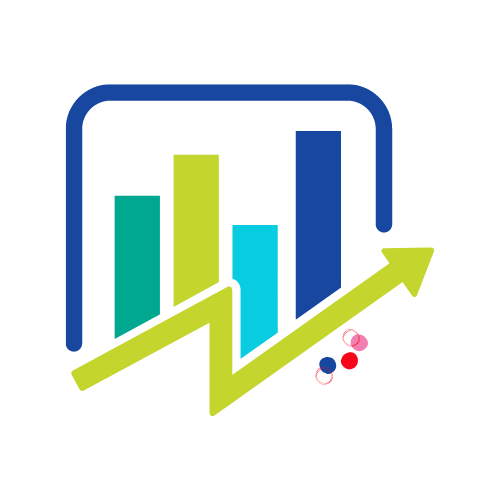The Power of Seamless Data Integration
In today’s data driven world, organisations increasingly rely on data platforms to manage, process and analyse vast amounts of data. A well built data platform is the backbone for these activities, providing the infrastructure and tools to derive valuable insights from raw often unorganised data. Central to the effectiveness of any data platform is seamless data integration. RUBIX delves into the intricacies of building a robust data platform and we highlight the critical role of data integration.
Understanding Data Platforms
Put simply, a data platform is like a kitchen in a restaurant, it receives ingredients (data ingestion), stores them (data storage), cooks the food (data processing), tastes and adjusts the recipes (data analysis) and serves the dishes beautifully (data visualisation). This ensures the whole data lifecycle is managed efficiently, just like a restaurant ensures delicious meals and happy customers!
Data platforms are designed to handle an organisation’s entire data lifecycle and typically include various components such as:
- Data Ingestion Tools: These tools capture data from multiple sources, including databases, APIs, IoT devices, and third-party applications.
- Data Storage Solutions: Scalable storage systems like data lakes and data warehouses store vast amounts of structured and unstructured data.
- Data Processing Engines: Technologies like Apache Spark and Hadoop process and transform data at scale.
- Analytics and BI Tools: Platforms such as Tableau, Power BI, and Looker enable data exploration and visualisation.
- Machine Learning Frameworks: Tools like TensorFlow and Scikit-learn support the development and deployment of predictive models.
The Role of Data Integration
Data integration is the process of combining data from different sources to provide a unified view. It is a critical component of a data platform because it ensures that data from disparate sources can be analysed together to deliver the business the most comprehensive insights.
Effective data integration enables:
- Data Consistency: Ensures that data from different sources is accurate and consistent, reducing discrepancies.
- Data Accessibility: Makes data readily available across the organisation, breaking down silos and enabling cross-functional analysis.
- Improved Decision Making: Provides a holistic view of the organisation’s operations, leading to better, more informed, data driven decisions.
“Data quality is directly linked to the quality of decision making,” says Melody Chien, Senior Director Analyst, Gartner. “Good quality data provides better leads, better understanding of customers and better customer relationships. Data quality is a competitive advantage that D&A leaders need to improve upon continuously.”
Key Components of Data Integration
- Data Connectivity: Establishing connections to various data sources, including on-premises databases, cloud storage, APIs and external data providers.
- Data Transformation: Standardising and transforming data into a common format that can easily be analysed. This involves cleaning, deduplication and normalisation processes.
- Data Loading: Efficiently loading transformed data into a central repository, such as a data lake or data warehouse.
- Data Quality Management: Ensuring the accuracy, completeness, and reliability of data through ongoing monitoring and validation.
- Metadata Management: Maintaining detailed information about data sources, transformations and lineage to support data governance and compliance.

Building a Data Platform with Seamless Integration
To build a data platform with seamless data integration, organisations should consider the following best practices:
- Define Clear Objectives
Start with a clear understanding of your business objectives and data requirements. Identify the key data sources, the types of data needed, and the desired outcomes from data integration efforts.
- Choose the Right Tools
Select tools and technologies that align with your data integration needs. This may include ETL (Extract, Transform, Load) tools like Talend or Informatica, data integration platforms like Apache Nifi, or cloud-based solutions like AWS Glue or Azure Data Factory.
- Implement Robust Data Governance
Establish data governance policies to manage data quality, security, and compliance. This includes setting up data stewardship roles, defining data standards and implementing data access controls.
- Automate Data Integration Workflows
Leverage automation to streamline data integration processes. Automated workflows can handle data ingestion, transformation, and loading tasks, reducing manual effort and minimising errors.
- Ensure Scalability
Design your data platform to scale with your organisation’s growth. Use scalable storage solutions, distributed processing engines and cloud-based services to handle increasing data volumes and complexity.
- Monitor and Optimise
Continuously monitor data integration processes to identify bottlenecks and optimise performance. Implement data quality checks and validation routines to ensure the reliability of integrated data.
Conclusion
Building a robust data platform with seamless data integration is essential for organisations looking to leverage their data assets effectively. By following best practices and leveraging the right tools, businesses can ensure data consistency, accessibility and quality, ultimately driving better decision making and achieving strategic business goals. In a world where data is a key differentiator, investing in a solid data platform and integration strategy is no longer optional but a necessity.
At RUBIX we know exactly how it’s done, making what seems complex, simple. Ask us how today.
Got Data? Think RUBIX.










